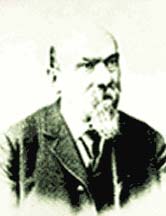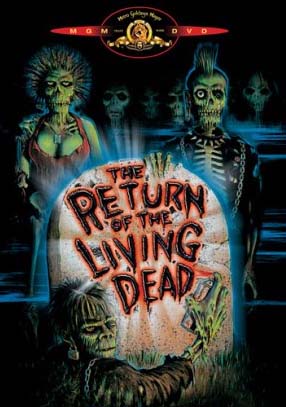

Famous Cases | Historical Tales | Vampires | Zombies
 |  |
Famous Cases | Historical Tales | Vampires | Zombies |
Q: Have any vampire or zombie physical attributes ever been measured? If so, what are their limitations? For example, how fast can a vampire run in miles per hour, and how far? How much pressure could a zombie's bite exert in pounds per square inch? What are their physical strengths; in other words, how many pounds could a vampire/zombie lift such as bench press, pull, or dead lift (no pun intended)?
![]() Brian, Mesquite, Texas
Brian, Mesquite, Texas
 |
| Kristof Goessman |
Let's start with zombies, because their superhuman abilities boil down to two attributes: biting and gripping. While early stage zombies have been observed lifting cars to get at their prey, their ability to lift heavy objects goes downhill fast after transformation. However, a zombie's bite and grip remain extremely powerful even in Stage III.
A normal human can exert between 150 and 300 pounds per square inch of pressure with a bite. A zombie puts that to shame with a bite that adds up to well over 1,000 pounds per square inch of pressure. This makes a zombie about equal to a wolf in biting strength. As for grip, zombies can exert about 400 pounds per square inch of pressure, approximately 10 times that of normal humans and close to the gripping strength of a bald eagle. That's more than enough force to crush bones. This gripping strength is fairly consistent among all zombies, although those with larger hands have an advantage in that they can exert that pressure over a larger area.
While zombie powers are mostly limited to its bite and grip, vampires are superb athletes with enhanced strength and speed and a higher proportion of fast-twitch muscle fibers. A newly transformed vampire will experience a three- to five-fold increase in strength from its human state. So, for instance, a human male who could bench press 150 pounds would be able to bench between 450 and 750 after transformation. These increases hold for squats and deadlifts as well. As for running, suffice it to say that if there were a vampire nation, it would win all the track and field golds at the Olympics. An average vampire's top running speed of between 25 to 30 miles per hour is on par with a world class sprinter, but what's truly astonishing is that they can maintain that speed over a much longer distance than humans. While no hard data exists, empirical evidence suggests that vampires could run a marathon (26.2 miles) in one-and-a-half hours, more than 30 minutes better than the human world record. I myself once saw a vampire sprint away and disappear over a hilltop that was a mile from me in just over two minutes.
The speed and strength of vampires remains proportionate to what it was when they were humans. For example, while a vampire can perform a 10-foot vertical leap (the best human efforts are in the three- to four-foot range), a vampire Michael Jordan would jump even higher. Even obese humans become superb athletes when transformed into vampires; they lose most of their fat within a few weeks of transformation.
All this is further proof that fighting the undead was and is not for the faint of heart.
Q: How long would the power last in the event of a zombie outbreak?
![]() Nathan, Berkeley, California
Nathan, Berkeley, California
A: In 1953, the FVZA, working with federal authorities and utility bosses, developed a contingency plan for keeping the power going during a zombie outbreak. The plan revolved around stockpiling fuel reserves, securing installations and developing systems that could be operated with minimal human input. However, our power supply has changed considerably since then. Currently, there are four major sources of power in the United States and Canada: coal, nuclear, hydroelectric and natural gas. I lump the United States and Canada together because the power supplies for the two countries are interconnected, as the blackout of August 2003 proved.
 |
| When the zombies come, here's hoping you have hydroelectric power |
Nuclear power plants, which generate approximately 20 percent of the electricity in the United States and 12 percent in Canada, are more sophisticated facilities and can run longer without human operators. In a rapid zombie outbreak, a modern North American nuclear plant would likely run unattended for somewhere between 48 hours and a week.
Hydroelectric plants, which supply roughly 60 percent of the electricity in Canada and 7 percent in the United States, are highly reliable and require relatively few controls. In addition, their fuel reserve, which is the water contained behind the dam, can last for weeks. Barring sudden equipment failure or other unusual circumstances, most hydroelectric plants in good operating condition would last days or weeks unattended.
Natural gas pipelines in most regions would maintain pressure for only a day or two without human intervention.
Bottom line: in a rapid, widespread zombie outbreak, scattered blackouts and brownouts would start to appear within four to six hours. Within 24 hours, major portions of the United States would be without power, and within one week most of the country would be plunged into darkness, except for scattered "islands" of electricity, such as those served by wind farms and solar.
In a more gradual outbreak, operators and utilities would have enough advance warning to take measures to keep the power going for awhile, such as isolating key portions of the grid and terminating power delivery to areas of highest zombie density. In addition, operators could improve plant reliability by disabling or eliminating non-critical alarm systems and ignoring many safety and emissions issues.
Of course, fuel supply would eventually be a problem. Hydroelectric plants would fare best, essentially having an unlimited fuel supply given normal rainfall, and could operate until some essential component failed or wore out. Nuclear plants could run for perhaps a year or more before they would need refueling. Coal power plants might last anywhere from one to six months, while natural gas plants likely would be the most vulnerable, since maintaining the gas wells, balancing the gas flow, and otherwise keeping the pipeline system intact requires considerable effort.
My advice: stockpile generators and gasoline. Additionally, at the first sign of an outbreak, consider taking a drive with friends and trying to commandeer any abandoned gasoline tanker trucks that might have been left behind in the panic. With generators, fuel, and a well-protected residence, you can extend your existence for months if not years. Of course, your cable probably will be out, but you watch too much TV anyway.
References:
Straight Dope Science Advisory Board
Canadian Electricity Association Web site
U.S. Department of Energy Information Administration Web site
Nuclear Energy Institute Website
 |
| If zombies had rights? |
Perhaps mindful of the disasters that had resulted from the 1935 vampire ruling, the Court came down on the side of the FVZA and ruled that zombies are not entitled to the rights afforded to U.S. citizens under the Equal Protection Clause of the 14th Amendment. In the majority decision, Justice Earl Warren wrote that "the right of the citizen to safety outweighs the state's interest in the potential life of a zombie."
In theory, this ruling set zombies up for significant exploitation. But the fact is, zombies are just not practical as a source of labor. They are uncooperative, dangerous to handle and break down swiftly in the absence of a food supply. For cheap labor, a horse or a mule is a much better bet.
 |
| The zombie virus, magnified 6,500 times |
One example readily comes to mind. In 1968, hunters shot two zombies in the woods outside the town of Stony Plain in Alberta, Canada. Three more zombies turned up in the area the next day. Since none of the zombies bore any evidence of bite marks, investigators ordered an immediate examination of the town water supply. Sure enough, tests revealed the presence of the zombie virus. Eventually, zombie remains were discovered piled up against a storm drain near town. Officials surmised that when heavy storms rolled through the area earlier in the week, the zombie remains were washed into the drain, allowing the virus to infiltrate the town well. Although the water supplied approximately 150 to 180 homes, only five other people were infected.
Soil conditions are the main determinant of how long the zombie virus will survive. For example, the zombie virus can survive 15 to 25 days in an air-dried soil, compared with 60 to 90 days in a sample with 10 percent moisture by content. Ultraviolet light is destructive to the virus, so virus exposed to the sun will not last as long.
The best ways to treat water potentially tainted with the zombie virus include the use of chlorine, ozone, and in some cases bromine or iodination.
 |
| "I believe we should let the undead stay that way." |
One area where the two candidates do differ is on vampire and zombie research. At a recent campaign stop in New Mexico, President Bush stated that he no longer will support research using vampire and/or zombie DNA (although I suspect the president misspoke when he uttered the now-famous line, "I believe we should let the undead stay that way.") John Kerry has said he supports continued research under the strictest possible conditions. Though their motives may be different, both Bush and Kerry have a point. As you know, I am in support of going slow on vampire and zombie research. However, I'm afraid that a total ban on research will force vampire and zombie studies into the proverbial back alleys of science, where oversight is minimal and security measures nonexistent.
It's interesting to see how the parties have changed positions on this very important issue. President Ronald Reagan, a Republican, signed the bill overturning the research ban. Now, it's the Republicans calling for a reinstatement of the ban, while the Democrats are pushing for continued research.
 |
While both stories are entertaining ones, they are most definitely fiction. I have never known of any corpses to be reanimated by toxic chemicals or radiation. The zombies I dealt with were the result of an infection.
Incidentally, Trioxin, the chemical that reanimated the corpses in Return of the Living Dead, is a real chemical used by morticians to counteract the tissue constriction that occurs in a body after death.